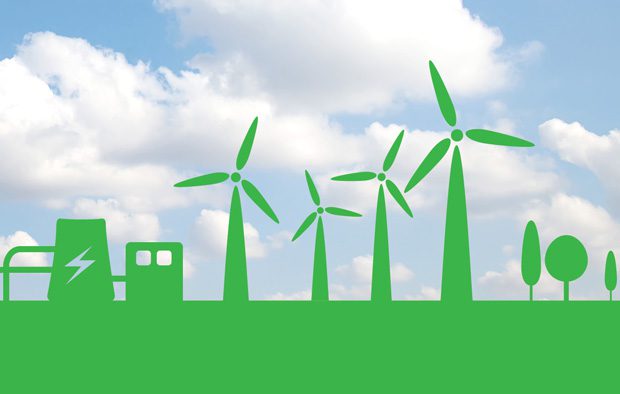
Transitioning to Tomorrow’s Fuels
Renewable energy sources seem to be the way of the future, but how can we begin to use them now?
[dropcap]It[/dropcap] is a fact that fossil fuels are finite.
“Our supply may last 50, 100 or 500 years, but at some point in the future, they will be exhausted,” says Oklahoma Renewable Energy Council (OREC) President Greg Adams. “At that point, Mother Nature will have imposed a 100 percent renewable energy standard. The sooner we start making that transition, the longer our fossil fuels will last and the easier that transition will be. OREC tries to assist, accelerate and encourage that transition.”
Renewable energy sounds like the way of the future, but it does require some upfront investment. So why should everyday Oklahomans consider alternative, renewable energy sources for their own homes?
“Long-term cost savings, an independent source of power and a reduced environmental footprint,” Adams answers.
The OREC conducts monthly meetings that address current events, developments and legislation that affects the renewable energy industry in the state. The group also provides a resource guide for homeowners and landowners, and supports statewide energy conferences. The mission of the Oklahoma chapter is both local and large-scale.
“We believe that Oklahoma needs to aggressively develop its renewable resources to spur economic development (particularly in rural areas), improve the environment and preserve our state’s position as a net electricity exporter,” Adams says. “Oklahoma is blessed with abundant natural gas and renewable energy, and we believe these complementary energy resources represent the future of clean domestic energy supply.”
Currently, there are several different sources for Oklahomans. One source is geothermal heat pumps, which Adams says pay off the quickest out of all the other alternative energy sources.
According to the U.S. Department of Energy, these heat pumps have been in use since the 1940s. These pumps “use the constant temperature of the earth as the exchange medium instead of the outside air temperature,” making them more efficient.
In addition, the International Ground Source Heat Pump Association (headquartered at Oklahoma State University) states that while a ground-source heat pump costs more than a conventional system, “energy savings quickly offset the initial difference in purchase price” due to this system’s low operating costs.
[pullquote]“The transition to renewable sources of energy will be much easier if we accomplish it over a longer period of time. That means starting now,”[/pullquote]Solar energy is another alternative source. There are two different types of solar energy available to homeowners: PV and thermal transfer. PV is short for “photovoltaic” and is defined as devices that “generate electricity directly from sunlight via an electronic process that occurs naturally in certain types of material, called semiconductors” by the Solar Energy Industries Association.
According to Renewable Energy World, advantages of PV systems include little maintenance and almost no chance of freezing or overheating. Thermal transfer systems, on the other hand, use the sun’s light to create heat instead of converting the sun’s light into electricity.
Adams says that while both PV and thermal transfer systems require low maintenance, there is a long payback for the initial investment.
But Oklahoma is also famously known for its “wind sweeping down the plains,” right? So why not capture this energy and put it to use?
“Small wind [as an alternative renewable energy source] is dependent on the wind resource of the local area,” Adams says.
Oklahoma’s State Impact, a reporting project of National Public Radio member stations, found that wind energy is especially expanding in western parts of the state, and that Oklahoma is ranked in the top ten for wind “availability” and generation.
Oklahoma is a very energy-aware state, Adams says, which makes the job of the Oklahoma Renewable Energy Council easier and more difficult at the same time.
“Landowners generally understand contracts, royalties and production percentages, so we’re not starting at square one with them. And legislation has been relatively friendly until recently,” Adams says. “On the flip side, there has been some unwarranted ‘you’re-stealing-my-slice-of-the-pie’ mentality that has been challenging.”
But while there are some challenges, including public perception and cost efficiency, Adams says that investing in renewable energy sources is always worth the effort.
“The transition to renewable sources of energy will be much easier if we accomplish it over a longer period of time. That means starting now,” Adams says.
Overall, it takes some patience in order for the initial investment in renewable energy to pay off.
“In general, renewables are in the five-to 15-year payback range, but there are so many factors effecting individual installations,” Adams says.
But, if a homeowner is not ready to make the switch, there are still easy ways to conserve energy around the house. A “negawatt” is a negative megawatt, or a megawatt of saved energy, and Adams says average homeowners have several options to increase “negawatts,” including investing in improved insulation, caulking and window coverings.






















